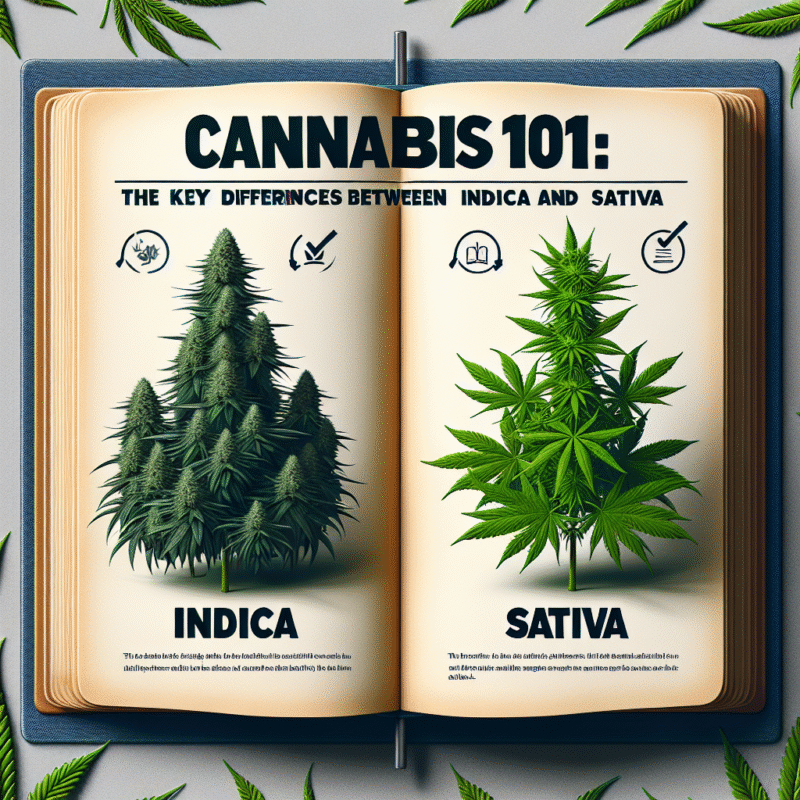Cannabis 101: The Key Differences Between Indica and Sativa
As cannabis continues to gain acceptance and popularity across the world, understanding its basic components is essential for both novice users and seasoned veterans. One of the most fundamental distinctions in cannabis strains is the difference between Indica and Sativa. This article will explore their characteristics, effects, and potential uses to help you make informed choices.
What are Cannabis Indica and Sativa?
Cannabis is classified mainly into two strains: Indica and Sativa. Although both belong to the same plant species, Cannabis sativa L., they possess distinct differences in their physical properties, chemical composition, and effects on users.
Characteristics of Indica
-
Plant Morphology: Indica plants are shorter and bushier compared to Sativa strains. They typically have broader leaves and denser buds.
-
Average THC/CBD Levels: Indicas often have higher levels of CBD relative to THC, though this varies by strain. This makes it a popular choice for those seeking medicinal benefits without intense psychoactive effects.
-
Effects: Indica strains are often associated with a "body high," promoting relaxation, pain relief, and sleep induction. Users frequently describe feelings of calmness and tranquility, making Indicas well-suited for nighttime use.
- Common Uses: Indica strains are often recommended for conditions such as insomnia, chronic pain, anxiety, and muscle spasms. They can help reduce discomfort and restore peace in stressful situations.
Characteristics of Sativa
-
Plant Morphology: Sativa plants tend to be taller and leaner, with narrow leaves and looser buds, which allows them to thrive in warmer climates.
-
Average THC/CBD Levels: Sativas typically exhibit a higher THC content relative to CBD. This skew towards THC often results in more pronounced psychoactive effects.
-
Effects: Users generally report a "head high" when consuming Sativa strains. This can result in feelings of euphoria, creativity, and increased focus or energy. Consequently, Sativas are often preferred for daytime use.
- Common Uses: Sativa strains are commonly sought for conditions such as depression, fatigue, and attention deficit disorders. They can enhance mood and stimulate appetite, making them beneficial for individuals needing a boost.
The Hybrid Option
In addition to Indica and Sativa, there are also hybrid strains that combine attributes from both types. Hybrids can be Indica-dominant, Sativa-dominant, or balanced, allowing users to tailor their experience based on personal needs and preferences.
Understanding Cannabinoids and Terpenes
While the Indica vs. Sativa debate is foundational, it’s essential to remember that effects can also be influenced by other factors such as:
-
Cannabinoids: Compounds like THC, CBD, CBG, and others contribute to the psychoactive effects and medicinal potential of the strain.
- Terpenes: These aromatic compounds give cannabis its distinctive smell and taste. Different terpenes can also influence the effects of a strain. For example, myrcene is known for its sedative effects, while limonene is often uplifting.
Choosing the Right Strain
When deciding between Indica and Sativa, consider your individual needs and circumstances:
-
Purpose: Are you looking for something to help you relax at the end of the day? An Indica may serve you well. If you’re seeking something to boost your creativity or motivation, try a Sativa.
-
Time of Day: Indicas are best suited for nighttime use due to their calming effects, whereas Sativas are generally more appropriate for daytime consumption.
- Experiment: Everyone’s endocannabinoid system reacts differently. It might take some experimentation to find the strain that works best for you.
Conclusion
Navigating the world of cannabis can be overwhelming, especially with the myriad of strains available. By understanding the key differences between Indica and Sativa, you can make more informed decisions about which type of cannabis may best suit your needs. Remember to start slow, pay attention to how different strains affect you, and consult with professionals or budtenders for guidance. With the right knowledge, you can unlock the full potential of cannabis to enhance your life positively.

